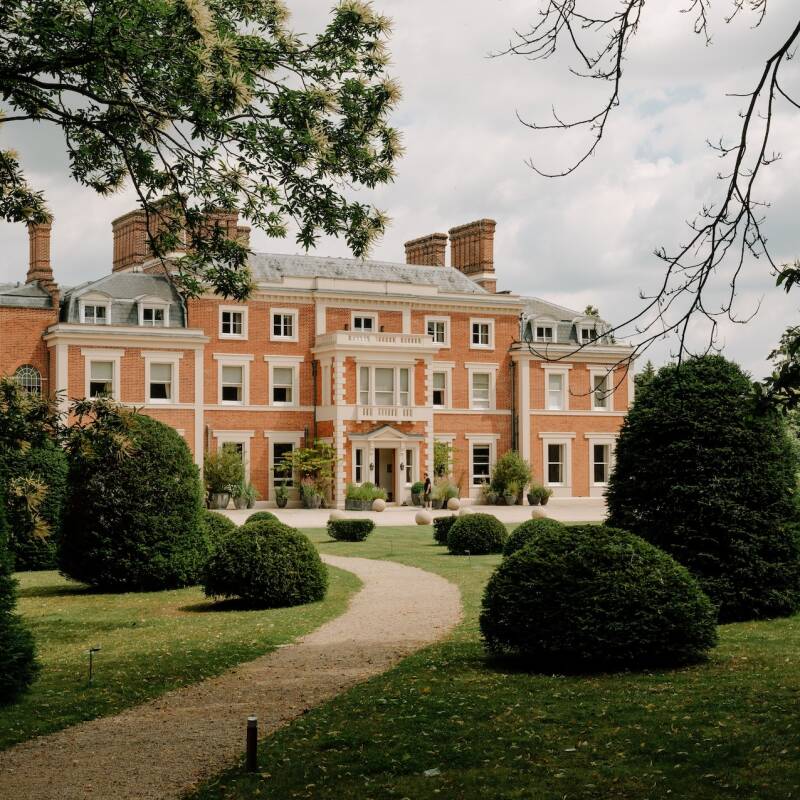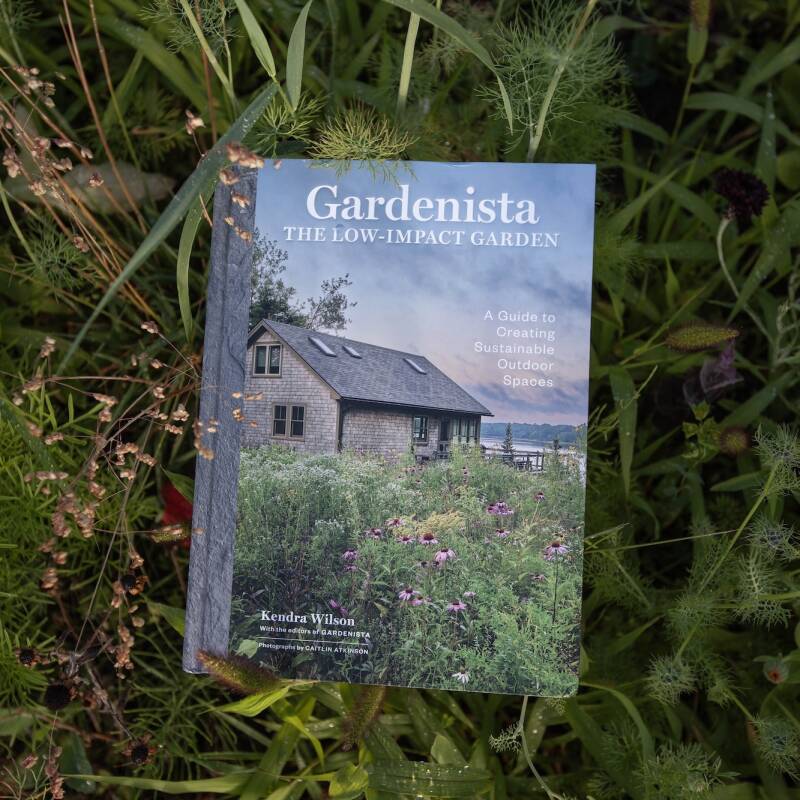This is part of a series with Perfect Earth Project, a nonprofit dedicated to toxic-free, nature-based gardening, on how you can be more sustainable in your landscapes at home.
“We have declared 2024 the year of milkweed,” says Andi Pettis, director of horticulture at Governors Island. For the past couple of years, Pettis and her team have been busy incorporating milkweed into the island’s plantings. They’re focusing on the three species native to the ecoregion: butterfly weed (Pettis’s favorite because of the “incredible variation in color from golden yellow to almost scarlet”), mauvy common milkweed, and hot pink swamp milkweed. Her goal is to finish planting 5,000 milkweed plants this year. “Showing the relationship between monarch butterflies and milkweed is an easy way for us to connect people to the benefits of native plants and show them why it’s important to support wildlife even in an urban environment.” The efforts have paid off. They’ve been noticing more and more monarchs on the island. You’ve heard it before: If you plant it, they really do come. (See Monarch Butterflies Are Nearing Extinction: 5 Ways to Help.)
Planting milkweed is just one of the many initiatives that Pettis and her team are doing to bolster biodiversity. “Climate resiliency and sustainability were sort of baked into the design of the park,” she says. Created by the design firm West 8, with Mathews Nielson Landscape Architects, the park features 120 acres of hills, meadows, and forests in the middle of New York Harbor. “It was a reuse project really—an old military base turned into a public space with new parks,” she said. “But there was no horticulture staff when I was hired [six years ago].” Pettis, who trained at Brooklyn Botanic Garden and had risen through the ranks at The High Line to become director of horticulture before moving to Governors Island, had to build a team from scratch and began to rehabilitate areas where maintenance had been deferred for years. Today, she and her team have introduced 52 native plant species to the island, planted habitat for butterflies and birds, and brought in sheep to tame the rampant spread of invasive species. “We’re working with nature here,” she says. “It’s not a short fix, but it’s working. We’re in this for the long haul.”
Pettis talks about this bustling and beautiful urban island park and shares how they’re bringing biodiversity back. [This interview has been condensed and edited for clarity.]
Photography by Sarma Ozols, unless otherwise noted.
Q: How are you gardening for biodiversity?

A: The park was designed for sustainability and climate resilience. West 8 built hills and these kinds of swales and berms to raise part of the park out of the 100-year floodplain. Working with Matthews Nielsen, they created a lot of naturalistic areas based on coastal maritime plant communities and filled the park with a lot of native trees. I think there are 53 different species of native trees planted on the South Island alone!
We have made it clear that we are choosing plants that mimic our coastal maritime shrublands and grasslands native plant communities. We’re also focusing on those that benefit biodiversity and wildlife. In areas where we have managed to retake the land with these native plant communities, we’ve seen huge upticks in the native insect populations.
Q: How are you adapting to our changing climate?

A: As temperatures warm, we are definitely experimenting with plants that would be considered more Southern. For example, we are considering planting live oaks on the island. We are also growing pawpaws, persimmons, and magnolias that are all doing really very well.
During the pandemic, we decided to stop mowing one of the areas around the historic forts. It was originally a golf course and we were essentially mowing it as a manicured lawn. But when we stopped, people loved it, so we just mowed paths and areas under the trees where people could picnic. We loved seeing people walking through the meadow and using the land in a very different way than it had been intended. We also saw the populations of insects pick up. We could hear the buzzing of pollinators and watch ground nesting birds using that habitat every spring. While there are some native plants there, it’s mostly cool season European turf grass that we let go. Of course, mugwort has started to take over in areas. The ground nesting birds don’t mind because it’s still a useful habitat for them. But we realize just how much more valuable the land would be for all wildlife if it were a native grassland, so we are now working to restore that area to native grasslands and create important habitat.
Q: What are some of the ways you’re handling invasive species?

A: When I started at the park almost six years ago, maintenance had been deferred on the new parts of the park for probably five years. As a result, a lot of those naturalistic areas that had been planted with native plants had failed and had become monocultures of mugwort and phragmites. It was a huge challenge trying to get rid of them, and we’re still at it.
We tried mowing, thinking that we could deplete the energy of these plants, but that did not really work. We also tried hand pulling, but, of course, both phragmites and mugwort spread by rhizomes, so pulling is really a Band-aid fix. We would have hundreds of volunteers come out at a time and pull. It would look great for a couple of weeks, but then the mugwort would come right back.
Then, one of our gardeners at the time, Malcolm Gore, asked, why don’t we get sheep to come in and graze? Sheep love soft vegetation. I think the first season we had them on the island, we saved Malcolm alone 800 hours in mowing compared to the year before—and the huge carbon footprint that comes with mowing. After the sheep graze the mugwort and phragmites in an area, we rotate them to another spot and plant the grazed area with native plants. Slowly we’ve been able to create an understory in this young urban forest. Four years later the sheep are still coming. They return every season, usually from mid-May to mid-September. After they’re done here, they go back to Friends of Tivoli Lake and Preserve and Farm until next year. We’ve had an amazing partnership with them.

As the sheep project was happening, we started looking at the hills [Discovery and Outlook, in particular]. Since these areas are mostly in full sun, they require a different management technique than sheep. We dig a trench around the area we want to solarize, which keeps the rhizomes from surrounding invasive species from crawling back in. Then we lay down clear plastic, weigh it down, and leave it up ideally April through September. We can come back in October and plant. We found that planting a combination of plugs and quart-sized pints and then seeding over them with cool and warm season native grasses has worked really well. We work in patches in those areas and have created some really beautiful meadows, grasslands, and coastal shrublands.
While solarization works for smaller patches, it is not really a scalable method to manage these invasive species for us. Our hills are massive. We are now working with Larry Weaner Landscape Associates to design trial transects and plant palettes that we can grow from seed and plugs in these massive areas. Again, it’s not a short process. We’re probably looking at five to seven years to figure out what will work, but we’re hopeful.
Q: Talk to me about the trees on Governors Island
A: We have a lot of mature trees in the North Island, including an American elm that’s about 200 years old. It’s probably survived because we are on an island. We have a pretty diverse canopy, but many of these trees are aging. As we move forward, we have to think about not only planting for biodiversity, but we also need to plan for the age diversity of our trees. Fifty-three percent of our tree canopy is London plane trees, which were all planted during the Robert Moses era. He planted thousands of them all over New York City and now all of those trees are aging out at the same time. We are thinking about what to plant behind them. Right now we are interplanting some of our beautiful old allées with other canopy trees, like native hickories, walnuts and oaks. These classic native trees do really well here in the North Island. One of the things about gardening and horticulture is that we are not planting these trees for ourselves, right? We will never benefit from the shade of those trees. We are planting them for our children and our grandchildren and all of the wildlife that will use that environment in the future.
Q: How are you creating more habitat?

A: Let’s take Hammock Grove, which is a young urban forest that’s about seven acres filled with more than 40 native tree species. Some of the trees are planted at their southernmost range, some at their northernmost range. Since we have a mix of trees from different regions, we are watching them to see which ones are thriving in our changing climate and thinking about how we can underplant them with native shrubs and shade plants. We want to create an immersive experience for our visitors while also creating habitat in that area. We have created paths so that people can really walk through and feel like they are in a forest. We are experimenting with different varieties of shrubs, like Rubus and Viburnum, and spring ephemerals, like Aquilegia, Claytonia, and bloodroot. We’ll see what works well—and what works too well. It’s always a challenge.
On the North Island, where many buildings are landmarked, there’s a campus feel to the landscape. Coast Guard families were gardening for years. As we restore planting beds in front and around houses, we’re using native plants in a more formal way. Eventually, we would like to create demonstration gardens to show how native plants can work in more formal and classic ways.
Q: What are some ways visitors can learn more about biodiversity on the island?

A: We encourage people to take part in some of our community science programs. We offer monthly nature walks with City College of New York insect ecologist professor Amy Berkov. Amy will take people around with nets to explore the insects on the island. It’s really fun to see people swishing a net over meadow plants and seeing this sort of amazing universe of insects that they might never have noticed or thought about before. She also occasionally holds night trapping sessions where she sets up a special light and a big sheet to attract nighttime insects. It’s not just moths, but beetles and other pollinators active at night. Download iNaturalist to log what you find on the island and sign up for one of these walks!
See also:
- Nature’s Defense: An Abandoned Former Military Site on the Rockaway Peninsula
- Maranatha ‘Forest Farm’ in NJ: Sheep, Silvopastures and Sustainability in the Spotlight
- Ask the Expert: Brooklyn Bridge Park’s Rashid Poulson on Spring Gardening Chores












Have a Question or Comment About This Post?
Join the conversation (1)